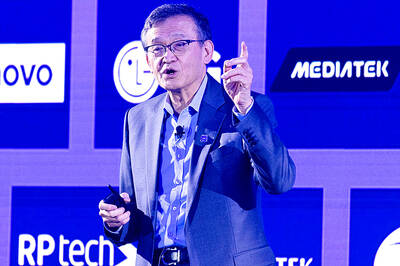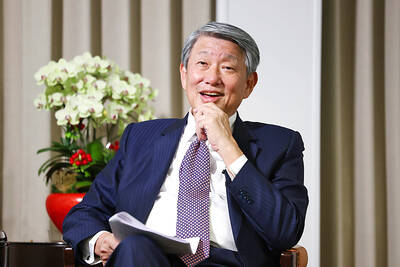GlaxoSmithKline PLC and Pfizer Inc agreed to combine their consumer healthcare businesses in a joint venture controlled by the British pharmaceutical giant, paving the way for it to split into two companies.
Glaxo is to hold 68 percent of the new entity, which would have combined sales of US$12.7 billion.
The UK drugmaker said it plans to list the new business on the stock market within three years.
Glaxo shares surged as much as 5.7 percent in London trading, the most since March.
The transaction creates the world’s biggest supplier of over-the-counter medicines with brands of painkillers such as Advil and Panadol, and marks a shift from CEO Emma Walmsley’s stated strategy of keeping the steadily performing consumer and vaccine businesses under the same roof as the more volatile pharma operations.
The company yesterday said the deal sets a foundation to create two companies — one focused on pharma and vaccines, and the other on consumer health.
Glaxo, Pfizer and others are grappling with surging research costs to develop new medicines even as insurers and governments demand lower prices for the finished product. A separation would help focus resources on separate businesses with different needs.
Walmsley has been working to revitalize a lackluster pipeline of new drugs at Glaxo, culling programs to focus on those that look most likely to succeed and bringing in industry veteran Hal Barron to oversee research.
Earlier this month, Glaxo agreed to buy drugmaker Tesaro Inc for US$5.1 billion, expanding in cancer medicines for a price analysts deemed high.
The deal follows a move by Glaxo earlier this year to pay US$13 billion for Novartis AG’s stake in a consumer joint venture.
The enlarged company is to operate under the name GSK Consumer Healthcare and the Glaxo unit’s existing CEO, Brian McNamara, and its chief financial officer, Tobias Hestler, would assume those roles in the joint venture.
The transaction is expected to close in the second half of next year. After that, Pfizer said it plans to deconsolidate its share of the business, which might boost its operating margins.

Nvidia Corp CEO Jensen Huang (黃仁勳) today announced that his company has selected "Beitou Shilin" in Taipei for its new Taiwan office, called Nvidia Constellation, putting an end to months of speculation. Industry sources have said that the tech giant has been eyeing the Beitou Shilin Science Park as the site of its new overseas headquarters, and speculated that the new headquarters would be built on two plots of land designated as "T17" and "T18," which span 3.89 hectares in the park. "I think it's time for us to reveal one of the largest products we've ever built," Huang said near the

China yesterday announced anti-dumping duties as high as 74.9 percent on imports of polyoxymethylene (POM) copolymers, a type of engineering plastic, from Taiwan, the US, the EU and Japan. The Chinese Ministry of Commerce’s findings conclude a probe launched in May last year, shortly after the US sharply increased tariffs on Chinese electric vehicles, computer chips and other imports. POM copolymers can partially replace metals such as copper and zinc, and have various applications, including in auto parts, electronics and medical equipment, the Chinese ministry has said. In January, it said initial investigations had determined that dumping was taking place, and implemented preliminary

Intel Corp yesterday reinforced its determination to strengthen its partnerships with Taiwan’s ecosystem partners including original-electronic-manufacturing (OEM) companies such as Hon Hai Precision Industry Co (鴻海精密) and chipmaker United Microelectronics Corp (UMC, 聯電). “Tonight marks a new beginning. We renew our new partnership with Taiwan ecosystem,” Intel new chief executive officer Tan Lip-bu (陳立武) said at a dinner with representatives from the company’s local partners, celebrating the 40th anniversary of the US chip giant’s presence in Taiwan. Tan took the reins at Intel six weeks ago aiming to reform the chipmaker and revive its past glory. This is the first time Tan

CUSTOMERS’ BURDEN: TSMC already has operations in the US and is a foundry, so any tariff increase would mostly affect US customers, not the company, the minister said Taiwanese manufacturers are “not afraid” of US tariffs, but are concerned about being affected more heavily than regional economic competitors Japan and South Korea, Minister of Economic Affairs J.W. Kuo (郭智輝) said. “Taiwan has many advantages that other countries do not have, the most notable of which is its semiconductor ecosystem,” Kuo said. The US “must rely on Taiwan” to boost its microchip manufacturing capacities, Kuo said in an interview ahead of his one-year anniversary in office tomorrow. Taiwan has submitted a position paper under Section 232 of the US Trade Expansion Act to explain the “complementary relationship” between Taiwan and the US